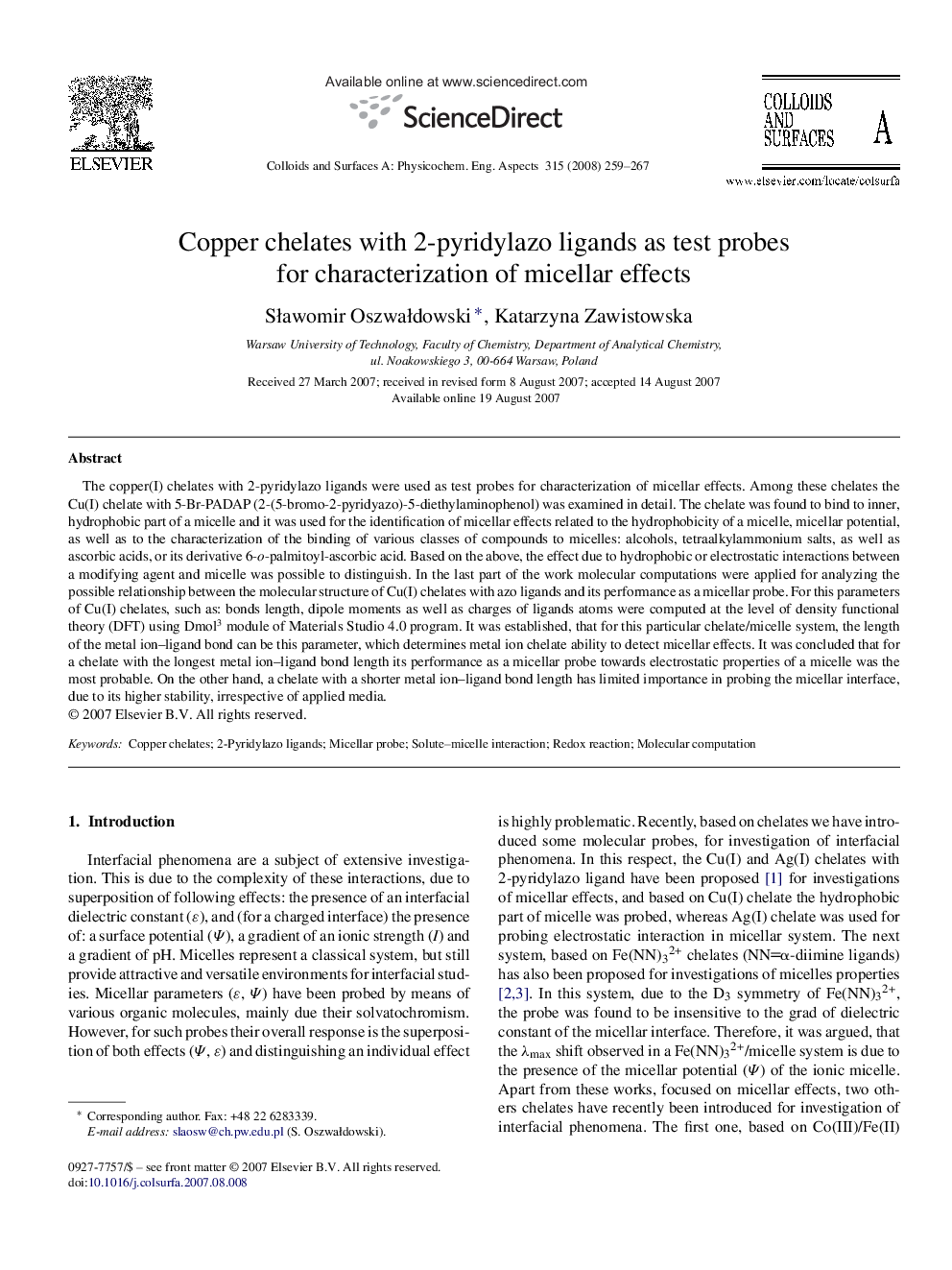| Article ID | Journal | Published Year | Pages | File Type |
|---|---|---|---|---|
| 597168 | Colloids and Surfaces A: Physicochemical and Engineering Aspects | 2008 | 9 Pages |
Abstract
The copper(I) chelates with 2-pyridylazo ligands were used as test probes for characterization of micellar effects. Among these chelates the Cu(I) chelate with 5-Br-PADAP (2-(5-bromo-2-pyridyazo)-5-diethylaminophenol) was examined in detail. The chelate was found to bind to inner, hydrophobic part of a micelle and it was used for the identification of micellar effects related to the hydrophobicity of a micelle, micellar potential, as well as to the characterization of the binding of various classes of compounds to micelles: alcohols, tetraalkylammonium salts, as well as ascorbic acids, or its derivative 6-o-palmitoyl-ascorbic acid. Based on the above, the effect due to hydrophobic or electrostatic interactions between a modifying agent and micelle was possible to distinguish. In the last part of the work molecular computations were applied for analyzing the possible relationship between the molecular structure of Cu(I) chelates with azo ligands and its performance as a micellar probe. For this parameters of Cu(I) chelates, such as: bonds length, dipole moments as well as charges of ligands atoms were computed at the level of density functional theory (DFT) using Dmol3 module of Materials Studio 4.0 program. It was established, that for this particular chelate/micelle system, the length of the metal ion-ligand bond can be this parameter, which determines metal ion chelate ability to detect micellar effects. It was concluded that for a chelate with the longest metal ion-ligand bond length its performance as a micellar probe towards electrostatic properties of a micelle was the most probable. On the other hand, a chelate with a shorter metal ion-ligand bond length has limited importance in probing the micellar interface, due to its higher stability, irrespective of applied media.
Related Topics
Physical Sciences and Engineering
Chemical Engineering
Colloid and Surface Chemistry
Authors
SÅawomir OszwaÅdowski, Katarzyna Zawistowska,
